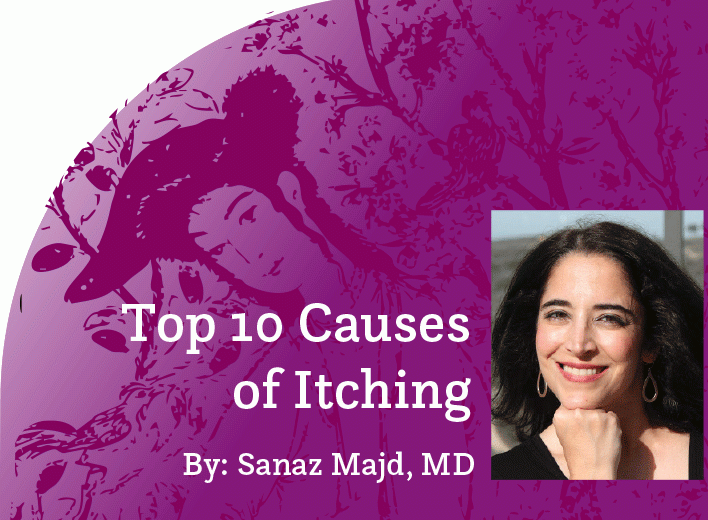HEMORRHOIDS
Sanaz Majd, MD
The topic of hemorrhoids is right up there (no pun intended) with toenail fungus, athlete’s foot, and head lice as being one of those potentially embarrassing medical conditions that you dread seeing your doctor for. As I’ve mentioned when reviewing these conditions in prior articles, you should never fear discussing anything with your doctor. These are day-to-day conditions that we see over and over.
And you would be quite surprised to learn how common these conditions really are. Hemorrhoids are a perfect example.
WHAT ARE HEMORRHOIDS
Hemorrhoids are simply enlarged veins in and around the anus, where the stool exits the gastrointestinal tract (GI). They appear as bluish-purple—or sometimes red—inflamed small bulges.
There are two types:
Internal hemorrhoids: These sit on the inside lining of the anus, not easily viewed or felt.
External hemorrhoids: Just as the name suggests, they are “external” to the anus and, therefore, are more easily seen and are palpable.
SYMPTOMS
About 40% of people have hemorrhoids. But not everyone is bothered by it. Only 45% of people with hemorrhoids actually have symptoms.
Symptoms depend on the type of hemorrhoids you have (internal vs external). However, many people actually have both.
Internal hemorrhoids often cause painless bleeding. You may see blood on the toilet paper when you wipe, or in the toilet bowl. When the blood enters the bowl, it can appear more dramatic because just a few drops can turn the entire bowl red, but is more difficult to quantify in this way. It is very important to note that other medical conditions can cause rectal bleeding as well, so this is a symptom you should never ignore. If you have rectal bleeding, please discuss it with your doctor.
External hemorrhoids are the opposite—they are painful and they do not tend to bleed. When a hemorrhoid becomes “thrombosed,” which means a clot forms within the hemorrhoid, it is often very painful and a lump outside the anus is easily felt. The clot does slowly resolve on its own over time, but it can be very uncomfortable to endure.
People with either hemorrhoid type sometimes also report itching and “leaky” feces.
DIAGNOSIS
Hemorrhoids can be diagnosed on a simple exam by your doctor. External hemorrhoids are usually easily visible, as I’ve mentioned. But in order to view internal hemorrhoids, your doctor may need to insert a hollow tube called an “anoscopy” into the rectum at about 4-5 inches deep. Then the anoscopy is slowly withdrawn while the rectum is examined for the presence of internal hemorrhoids.
Hemorrhoids are also often seen and diagnosed on a colonoscopy, where a camera is inserted into the rectum and advanced into the colon. Colonoscopies are routine screening tests for colon cancer, but may also be done for diagnostic purposes if people have certain symptoms—like chronic constipation, change in stool caliber, chronic diarrhea, or rectal pain or bleeding.
TREATMENT
If hemorrhoids are confirmed by your doctor and are not bothersome, you don’t need to do a thing. However, if they tend to cause problems, then here are some tips to handle them:
Prevent constipation: By far the most common cause of hemorrhoids is constipation. Hard, difficult-to-pass stool and/or straining with stooling can cause hemorrhoids to form and/or flare up. Aim for a stool consistency as soft as toothpaste.
Avoid prolonged sitting: Prolonged pressure on the bottom can also form hemorrhoids and/or trigger flare ups.
Increase fiber: The average adult requires a minimum of 4-5 servings of fruits and veggies a day. Some people may need more. If you cannot ideally obtain it through your diet, then consider a daily fiber supplement such as psyllium (one popular known brand is “Metamucil”).
Increase fluids: Stool requires fluids to pass through more easily.
Sitz baths: Soaking your bottom in warm water with over-the-counter (OTC) Epsom salt several times a day can help soothe and calm down the hemorrhoids.
Hemorrhoid creams: They often include a topical steroid ingredient called “hydrocortisone” and are sold OTC (for example, “Preparation-H”). Creams can be applied directly onto external hemorrhoids or inserted with an applicator for the internal ones. If the relief is insufficient, there are higher strength versions that your doctor can prescribe.
Surgical options: Rubber band ligation is the most common procedure to treat hemorrhoids and can be considered for those with recurrent rectal bleeding due to hemorrhoids. But this should be a last resort option. There are also other less commonly used methods that involve laser or sclerotherapy (injection of a chemical into the hemorrhoid that destroys the tissue, similar to varicose vein treatment). Surgery in the operating room is rarely done and often unnecessary. These options all require a referral to a colorectal surgeon.
Please note that all content here is strictly for informational purposes only. This content does not substitute any medical advice and does not replace any medical judgment or reasoning by your own personal health provider. Please always seek a licensed physician in order to discuss your own personal health.
Sanaz Majd, MD, is a board-certified Family Medicine physician and host of the Majd MD YouTube channel, reviewing the most popular medical topics: www.youtube.com/MajdMD. You can also follow her on Facebook or Instagram: @SMajdMD.



















